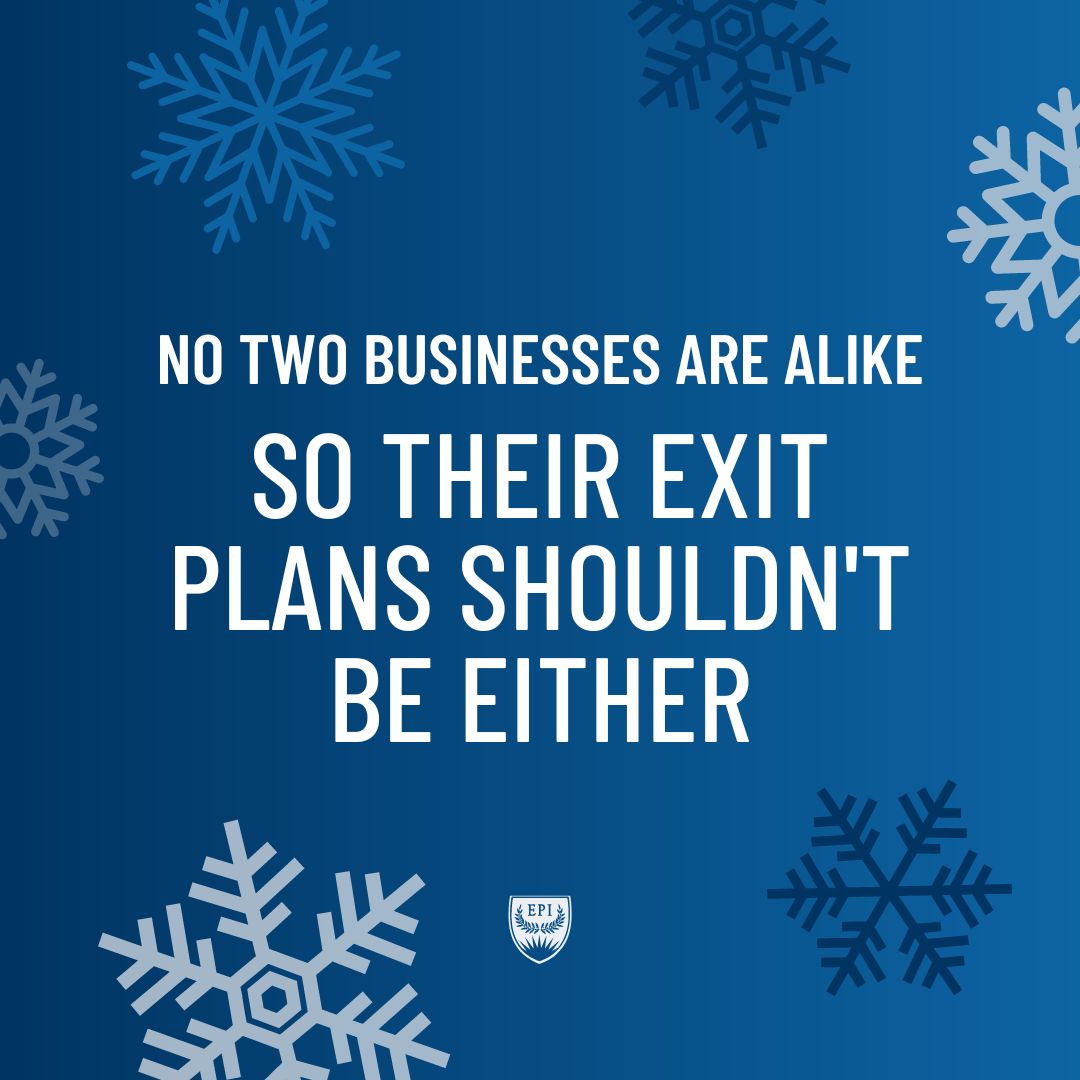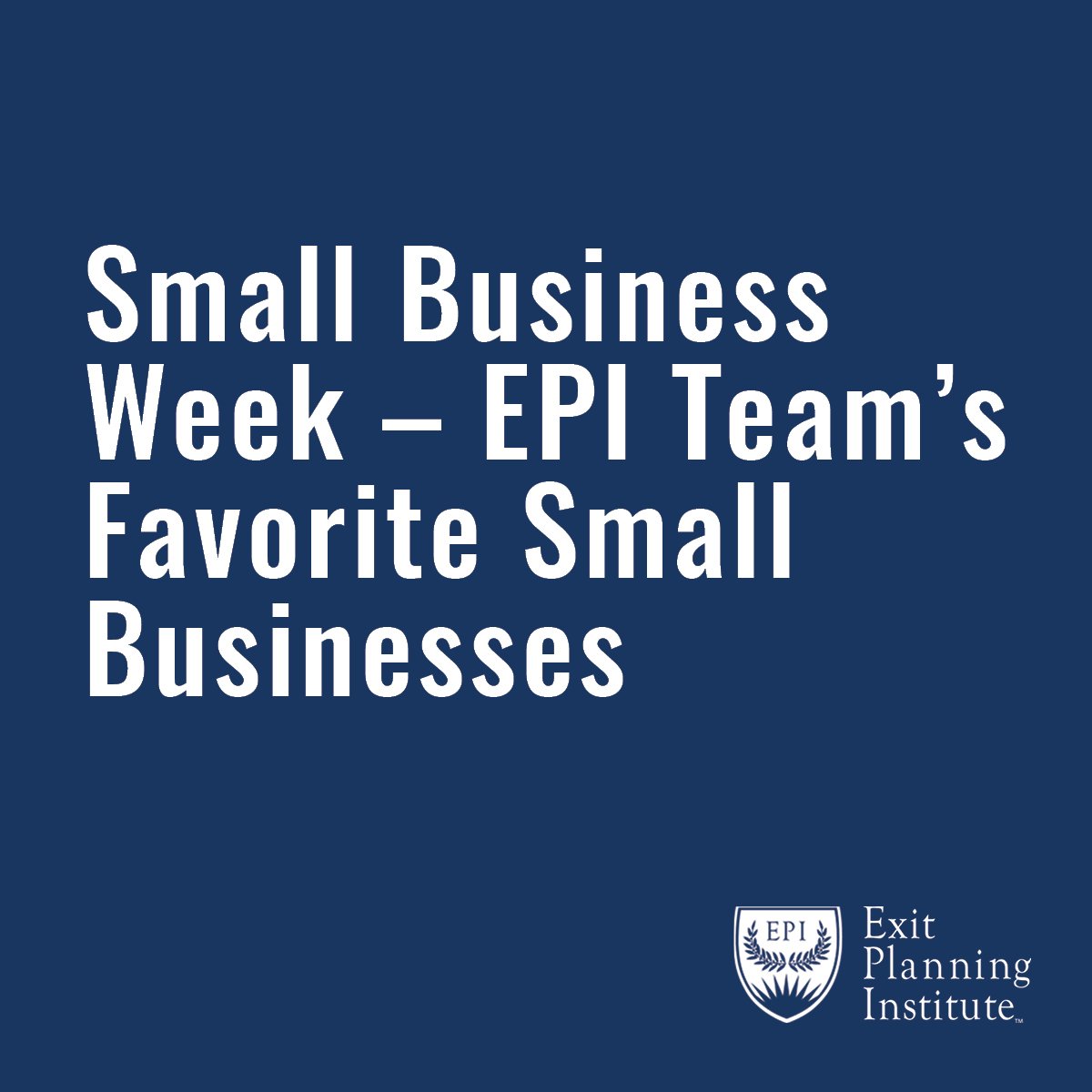
THE EXIT PLANNING BLOG
Keep up-to-date with exit planning, succession planning, industry trends, unique specialty insights, and useful content for professional advisors and business owners.
Share this
No Two Businesses Are Alike So Their Exit Plans Shouldn’t Be Either
by Colleen Kowalski on December 12, 2022

We have all heard the phrase “no two snowflakes are alike” at some point in our lives. This fun seasonal anecdote rings true about more than just snowflakes. No two people, experiences, places, or businesses are alike either.
Take a break from shoveling the billions of unique snowflakes on your sidewalk and see how the “no two are alike” phrase relates to your business.
Each Snowflake Looks Different Up Close
Scientists have determined that snowflakes can be sorted into about forty categories. However, given these forty categories, they estimate that there are up to 10158 snowflake possibilities. That’s 1070 times more designs than there are atoms in the universe! Given the seemingly infinite possibilities for snowflake designs, every snowflake you have seen in your life has been different.
The crystalline structure of snowflakes means all snowflakes have six sides. However, the details, size, and overall appearance differ for each snowflake. While they may look the same from afar, subtle and more drastic differences appear when viewed under a microscope.
Every Business is Different
Consider your business; when viewed from the eyes of a potential buyer, your business might appear similar to those of your competitors. However, upon closer inspection, those similarities fade away and the factors that make your business unique begin to stand out, for better or for worse. Two businesses could look identical from a distance. They are in the same industry, have the same amount of employees, and have similar revenue. But when viewed up close, differences in value begin to appear.
Both businesses might have the same amount of customers, but one business has a more entangled and loyal customer base, which in turn provides more value to the business long-term. The two companies are both owned and operated by individual owners, however, one is completely dependent on the owner to succeed, while the other has a decentralized operation that does not rely on the owner for every aspect of the organization.
Weather Conditions Determine The Shape of Snowflakes
One of the biggest factors that cause each snowflake to be different from the next is the weather and the surrounding environment. Snowflakes are formed when water vapor forms ice crystals around small particles of salt or clay. While they are made up of the same components, the environment impacts the outcome of the final design of the snowflake.
The shape of the snowflakes affects the texture, look, and feel of the snow layers on the ground. When softer flakes fall on frozen ground, this forms a powder. When the snowflakes are coated in frozen water droplets when they fall, this forms granular snow. Then the air warms, melts, and then refreezes the snow, turning it into a harder sheet of ice on top of denser snow.
The Impact of Market Multiples on Business Value
Just as environmental conditions determine what form of snowflakes will fall, market conditions determine a component of your business value. Your business value can be calculated by EBITDA x Cash Market Multiple and Recasted Sales x Sales Market Multiple. These Market Multiples reflect the current market and are often represented as a range of values. For example, The market will range up or down depending on the state of the private capital markets, the economy, and the industry of the business. This market multiple cannot be controlled by the owner, but can strongly impact the business value during a sale.
In a seller’s market, the range of multiples benefits the business value and increases the valuation prior to a sale. However, when the market is not in the owner’s favor, their business could be viewed as less valuable or could sell for a lower multiple than they initially thought it would.
Certain Snowflakes are Better Suited for Specific Uses
The various types of snow listed above are best suited for several instances. Powder is favored by skiers and snowboarders for its soft texture. Granular snow makes the best snowballs and snowmen due to its packability. Slush is perfect for those who forgot to shovel and can justify not shoveling now because the snow is basically melted already. Or is that just us…?
What Exit Option is Best For Your Business?
While certain types of snow work the best for specific winter activities, certain businesses are best suited for certain exit options over others. With a variety of exit options available to business owners, they must consider their personal and professional goals when deciding what options to exercise. There are generally eight exit options available for business owners, four internal and four external.
Internal options include an intergenerational transfer, management buyout, a sale to an existing partner or partners, and an employee stock ownership plan (ESOP). External exit options consist of a sale to a third party buyer, recapitalization, orderly liquidation, and IPO. While all options are valid opportunities for business owners, some suit the business and the owner’s goals better than others.
For example, if an owner is eager for the business to continue with a trusted new owner, they may be more agreeable to an internal option to sell to a family member or trusted partner. However, if the owner is looking to sell their business, equipment, and property and wash their hands of their business entirely, an orderly liquidation might be best for their goals.
As the snow continues to fall this winter, consider how well-prepared you are for your eventual business exit. And how prepared you are to shovel…
Follow our socials for more exit planning content and strategies.
Share this
- Blog (546)
- CEPA (424)
- exit planning (249)
- CEPA community (187)
- Business Owner (172)
- Exit Planning Summit (97)
- EPI Chapter Network (89)
- Value Acceleration Methodology (80)
- Exit Planning Partner Network (76)
- EPI Announcement (49)
- Content (48)
- Webinars (37)
- Excellence in Exit Planning Awards (33)
- Marketing (30)
- 2024 Exit Planning Summit (28)
- 5 Stages of Value Maturity (26)
- Books (24)
- EPI Academy (24)
- EPI Team (22)
- Exit Planning Teams (22)
- Leadership (21)
- 2023 Exit Planning Summit (20)
- family business (20)
- women in business (19)
- Intangible Capital (18)
- Exit Options (17)
- Black Friday (16)
- CPA (15)
- Walking to Destiny (15)
- State of Owner Readiness (14)
- Chapters (13)
- Chris Snider (12)
- National Accounts (12)
- Small business (12)
- charitable intent (12)
- personal planning (12)
- Financial Advisors (11)
- Season of Deals (9)
- 5 Ds (8)
- About us (8)
- Podcast (8)
- Insiders Bash (7)
- Scott Snider (7)
- Christmas (6)
- Exit Planning Content Library (6)
- Case Studies (5)
- Owner Roundtables (5)
- Three Legs of the Stool (5)
- Value Advisors (5)
- financial planning (5)
- Awards (4)
- Circle of Excellence (4)
- Exit & Succession (4)
- Five Ds (4)
- executive training (4)
- EPI Thought Leadership Council (3)
- Owners Forum (3)
- author (3)
- forbes (3)
- DriveValue (2)
- Exit Is Now Podcast (2)
- Peter Christman (2)
- Veteran (2)
- Whitepapers (2)
- Business Owners Forum (1)
- SOOR (1)
- business consultants (1)






